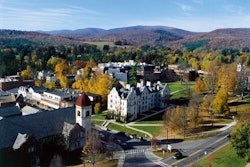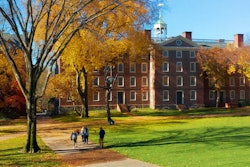LOS ANGELES — Surging numbers of Latinos and Asians accounted for virtually all of California’s population growth during the past decade, new Census data showed Tuesday.
In the period from 2000 to 2010, the state Latino population grew by 28 percent, to 14 million, in the nation’s most populous state, while Asian numbers grew by 31 percent, to 4.8 million.
In contrast, non-Hispanic Whites decreased by 5 percent, and the state’s African-American population dipped by 1 percent.
Over the decade, California’s population grew 10 percent, to 37.3 million, ranking 20th in growth percentage nationally and lagging other western states such as Nevada and Arizona.
It was the first time the nation’s most populous state has failed to pick up additional congressional seats after a census.
“If it weren’t for the Latinos and the Asians, California’s influence in (Washington) would have decreased,” says Arturo Vargas, executive director for the National Association of Latino Elected and Appointed Officials.
Demographers say the Latino population is growing faster than other ethnic groups because many Latinos are of child-bearing age, while the rest of the population tends to skew older.
California also has benefited from immigration from Asia and Latin America, even while residents have left for other states in search of jobs and cheaper housing.
The 2010 U.S. Census data released Tuesday also showed that Latino children became a majority in California in that category over the past decade as the number of non-Hispanic White children dropped 21 percent.
Dr. Kenneth Johnson, a professor of sociology at the University of New Hampshire, says that reflects a pattern seen elsewhere in the country where the number of non-Hispanic White children is falling because the White population is considerably older, leaving fewer White women in their childbearing years.
The loss is greater in California, he says, and the number of children in the state hardly grew at all.
The number of Hispanic children grew 17 percent. That means 51 percent of Californians under age 18 are now Latino.
Over the past decade, the state’s inland areas grew as Californians moved beyond the pricey coastal region. But demographers say that migration may have slowed in recent years after the economy slumped.
Of the state’s most populous counties, Riverside County was the fastest growing, with population jumping 41.7 percent to become the state’s fourth largest county.
California’s inland counties also have become more diverse. For example, Riverside County is now 46 percent Latino and San Bernardino is now 49 percent Latino, up from 36 percent and 39 percent, respectively, a decade ago.
Hans Johnson, director of research at the Public Policy Institute of California, says the growing diversity in suburbia might eventually ease the political divide between a largely Democratic coastal region and more Republican inland California since Latinos are more likely to vote Democratic.
“The caveat here is that many Latinos are immigrants and not naturalized citizens and therefore not eligible to vote,” Johnson says. “That is why the voting patterns will lag the demographic changes, but they are coming.”
While more than a quarter of Californians still live in Los Angeles County, the population of the county only grew 3.1 percent over the decade. San Diego County grew 10 percent to become the state’s second most populous county, with 3.1 million people. Orange County, with 3 million people, dropped to third.
The data will be used by a state commission to redraw congressional and state legislative districts.
Demographers questioned whether the data might reveal more than population trends in California.
Some suggested Californians also might be changing the way they view their ethnic identity and wondered whether people might be more likely to report they are Latino now than a decade ago, which could account for some of the shift in the population away from non-Hispanic Whites.
“Maybe some people who have one Hispanic parent weren’t Hispanic 10 years ago and now they are,” says John Pitkin, a demographer in Cambridge, Massachusetts. “I am sure there will be a lot of studies in the coming year trying to figure that one out.”





















